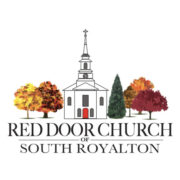In another post we looked briefly at the question “What is Liturgy?” We saw that liturgy simply refers to the things that a congregation does in service to God when it gathers for public worship.
In this post I want to wrestle with the question “What should a congregation do when it gathers to worship?” For Protestants this is basically a question of what the Scriptures teach.[1] Is there a place in the Bible we can turn to that gives us some clear direction on what a congregation should or should not do when it gathers for worship? In this post my goal is simply to try and scratch the surface by looking very briefly at a few passages in the Old and New Testaments for clues about our liturgical practices. Credit for the majority of the content in this post must be given to Bryan Chapell’s excellent book Christ-Centered Worship.
What Does the Bible Say: Old Testament
When we look to the Scriptures we will look in vain to find a chapter of the Bible that prescribes an exact order of service (liturgy). However, we find patterns in the both the Old and New Testaments. What those patterns reveal to us are a gospel shaped worship. In other words, when God’s people gather, the flow of the service generally reflects the way the gospel works in the hearts of people. Bryan Chapell gives the example of Isaiah 6 to illustrate this point:
God’s character recognized (vv. 1-4)
Human character confessed (v. 5)
God’s grace exhibited (vv. 6-7)
God’s grace assured (v. 7)
Response of thankful devotion (v. 8)
Instruction for obedience (vv. 9-12)
Promise of covenant blessing (v. 13)Christ-Centered Worship: Letting the Gospel Shape Our Practice, 103.
Of course, Isaiah was merely one person encountering God’s glory. We must ask the question, do we see something similar when a group has an encounter with God’s glory? Deuteronomy 5 is another place we see a pattern similar to what we find in Isaiah 6. In this instance, however, it is a corporate experience. Again, in Chapell’s words:
The people face the glory of God in the fire on Mount Sinai (vv. 4, 22-24). In response, they perceive their unworthiness to confront him and send Moses to receive God’s Word (vv. 5, 25-27). Moses reminds the people of the grace that released them from slavery (v. 6) and assures them that it still applies because God is maintaining the covenant he made prior to their obedience (vv. 2-3). In this context, God gives Israel the instruction of his Word (vv. 6-21). The people then promise their devotion (v. 27). Finally, Moses calls the people to covenantal response, charging them to obey God (vv. 32-33a) and promising his blessing (v. 33b).
Christ-Centered Worship: Letting the Gospel Shape Our Practice, 103.
While the details of these two events described in Isaiah 6 and Deuteronomy 5 are very different, what they both clearly convey is a general pattern of human response to God’s glory—the similarities are striking. These Old Testament glimpses are God’s way of preparing his people for the coming of the grace of God in the person of Jesus.
We also see this in the general way the tabernacle and temple functioned in the worship life of Israel but I will save those points for another post at a later date.
What Does the Bible Say: New Testament
When we come to the New Testament it becomes clear that the Old Testament’s systems were primarily about revealing the person and work of Jesus Christ (this is what the entire book of Hebrews demonstrates). What we are given in the Old is just enough information to prepare God’s people for what will come in the New.
In contrast to the Old Covenant systems, which were given to a particular people for a particular period of time, the New Covenant is not bound by a particular culture or place or time. No longer is the focus a physical people in a physical place, rather, the disciples are commanded to “go into all the world and make disciples” (see Matthew 28:18-20). Liturgical mandates, therefore, are scarce in the New Testament, not because worship has suddenly become less important, but because we are to be guided by greater theological principles rather than by specific worship forms. This allows the worship of God to cross cultural boundaries (to go into all the world) in remarkable ways while still accurately reflecting the God who has revealed himself finally and fully in the person of Jesus Christ. In Chapell’s words, the priority of the New Testament is “message over mechanics” (Christ Centered Worship, 109).
However, even though the New Testament gives little instruction about the mechanics of our corporate worship, does not mean that we are therefore permitted to do whatever we think or feel. If there is one message about worship that Old Testament makes very clear it is that God cares very much about how worship is done. The story of Nadab and Abihu in Leviticus 10 makes that fact clear.
So it seems we are caught on the horns of a dilemma. On the one hand we can see from the Old Covenant that God cares about how worship is done, yet, on the other hand, in the New Testament we are not given a great deal specific detail about what corporate worship in the New Covenant is to look like. What are we to do?
We certainly do not revert back to the old systems, which is what the recipients of the letter to the Hebrews were being tempted to do and the writer argues chapter after chapter for the superiority of the New Covenant and how only a fool would go back to the old structures which Christ has now done away with.[2]
However, worship is not altogether different under the New Covenant either. Because God is the same, yesterday, today, and forevermore (Hebrews 13:8), and because the Old Testament was intended to prepare for the new, what we see when we come to the New Testament is that the principles guiding worship do not drastically change.
As we go through the New Testament letters what we find is believers expressing their love for God by responding to the way God has expressed His love for them. We don’t find them clinging to particular rituals or forms but rather by responding to the redemption accomplished in Christ. In the end, what emerges is something very similar to the nature of worship under the Old Covenant.
In the book of Romans, chapters 11 through 15 we find a striking example of just how the principles and shape of worship in the Old and New Covenants are largely the same. At the start of chapter 12, Paul exhorts us to engage in “spiritual worship” by offering our bodies as “living sacrifices.” He then proceeds to tell us what that looks like, not by giving us a detailed outline of ritual practice but as obedience to God in all the arenas of life, both public and private. The content of the next few chapters follow a pattern similar in what we’ve seen from the Old Covenant worship. Chapell gives the following outline:
Recognition of God’s Character (Rom. 11:33-36)
Acknowledgement of Our Need of Mercy (Rom. 12:1)
Assurance of Mercy (Rom. 12:1)
Thankful Response (Rom. 12:2)
Instruction in New Obedience (Rom. 12:3-13:14)
Communal Care for One Another (Rom. 14:1-15:12)
Charge and Benediction (Rom. 15:13)Christ-Centered Worship: Letting the Gospel Shape Our Practice, 111.
Of course, Paul’s intention in the book of Romans is not to give us a liturgical outline for worship. The point being made here is merely to show that the essential truths of the gospel message take a particular shape and when we worship that shape emerges and forms our worship. One thing this means for our corporate worship is that if we are truly worshipping the Triune God of Scripture, it will reflect the general gospel patterns we see in both the Old and New Covenants. To put it more strongly, faithful churches that love God and His word, should actively strive to make these gospel truths as clear and explicit as possible, retelling the story of the gospel through their worship.
Different churches are going to do this in different ways, focusing on different aspects of the gospel but the historic church has kept these general elements in the forefront in corporate worship:
Adoration
Confession
Assurance
Thanksgiving
Petition and Intercession
Instruction from God’s Word
Communion
Charge and BenedictionChrist-Centered Worship: Letting the Gospel Shape Our Practice, 118.
These categories reflect the patterns we’ve seen from Deuteronomy, Isaiah, and Romans. When we gather as a church we should not merely proclaim the gospel but our liturgy should re-present the gospel in its flow. Liturgy that is truly biblical has a gospel shape—it retells the story of the gospel. In the words of Mike Cosper, “the gospel story is the worship story.”[3] The Bible is a big book made up of smaller books all telling a story. That story is about a faithful God who made a people that rebelled and turned against him, but God, being rich in love sought them out, paid the price for their rebellion and won them back through the sacrifice of himself, conquering death and securing a bright and eternal future in paradise together. This story must be retold in the church’s worship, week after week, for this is the story of the Bible and all true worship has its roots there.
——————–
[1] However, it must be acknowledged that the Roman Catholic liturgy has had “a pervasive and profound influence on later liturgies in Western Culture” says Bryan Chapell in his excellent book Christ-Centered Worship: Letting the Gospel Shape Our Practice (Grand Rapids: Baker Academic, 2009), 22.
[2] See this helpful video on the book of Hebrews by the folks at the Bible Project for an explanation on the purpose of the book.
[3] Rhythms of Grace: How the Church’s Worship Tells the Story of the Gospel (Wheaton: Crossway, 2013), 26.



